- News
- Reviews
- Bikes
- Accessories
- Accessories - misc
- Computer mounts
- Bags
- Bar ends
- Bike bags & cases
- Bottle cages
- Bottles
- Cameras
- Car racks
- Child seats
- Computers
- Glasses
- GPS units
- Helmets
- Lights - front
- Lights - rear
- Lights - sets
- Locks
- Mirrors
- Mudguards
- Racks
- Pumps & CO2 inflators
- Puncture kits
- Reflectives
- Smart watches
- Stands and racks
- Trailers
- Clothing
- Components
- Bar tape & grips
- Bottom brackets
- Brake & gear cables
- Brake & STI levers
- Brake pads & spares
- Brakes
- Cassettes & freewheels
- Chains
- Chainsets & chainrings
- Derailleurs - front
- Derailleurs - rear
- Forks
- Gear levers & shifters
- Groupsets
- Handlebars & extensions
- Headsets
- Hubs
- Inner tubes
- Pedals
- Quick releases & skewers
- Saddles
- Seatposts
- Stems
- Wheels
- Tyres
- Health, fitness and nutrition
- Tools and workshop
- Miscellaneous
- Cross country mountain bikes
- Tubeless valves
- Buyers Guides
- Features
- Forum
- Recommends
- Podcast
review
£3,713.00
VERDICT:
Fast and fun ride but its overly stiff titanium frame is tiring on rough roads
Weight:
9,050g
Contact:
At road.cc every product is thoroughly tested for as long as it takes to get a proper insight into how well it works. Our reviewers are experienced cyclists that we trust to be objective. While we strive to ensure that opinions expressed are backed up by facts, reviews are by their nature an informed opinion, not a definitive verdict. We don't intentionally try to break anything (except locks) but we do try to look for weak points in any design. The overall score is not just an average of the other scores: it reflects both a product's function and value – with value determined by how a product compares with items of similar spec, quality, and price.
What the road.cc scores meanGood scores are more common than bad, because fortunately good products are more common than bad.
- Exceptional
- Excellent
- Very Good
- Good
- Quite good
- Average
- Not so good
- Poor
- Bad
- Appalling
The Orient is J.Guillem's do-a-bit-of-everything road bike. With the geometry of an endurance bike and the ride qualities of a race machine, this titanium beauty has left me with a real quandary. I couldn't live with its comfort levels longterm even though it is such a great bike to ride, which got me thinking – is the Orient at fault or is it the UK's roads?
- Pros: Very quick bike, comfortable geometry, impressive stiffness
- Cons: Harsh ride, overly firm saddle, no mudguard mounts on fork
Ride
When describing the Orient on its website, one of the first things J.Guillem mentions is, 'J.Guillem's trademark stiff, lightweight and durable tubing.' So it's no surprise that this bike behaves like it does. For a bike of its kind it is brutally stiff. At times it's just downright uncomfortable, and that's coming from me – someone who'll take performance over comfort every time and actually prefers being battered around a bit for that feeling of a fast ride.
> Find your nearest dealer here
You feel everything, every single little ripple and stone in the road, unless you are on the smoothest of recently resurfaced A roads or a race track, and it can become tiring to each and every contact point. You don't get the characteristic titanium softness; it lacks that vibration damping smoothness.
I didn't complete a single ride without pins and needles in my hands at some point. I even had to drop my saddle height a touch to remove some of the weight from my wrists. This obviously caused discomfort elsewhere, not helped by the firmness of the saddle.
All of this is such a shame, because boy is this bike stunningly quick. For anything under three hours I was knocking out average speeds of 19-20mph consistently and getting home feeling like I hadn't had to bury myself to achieve it.
Acceleration is impressive. Mixing things with rush hour traffic on one of Wiltshire's main arterial roads, where you really need to keep the pace up to match the flow, entering and exiting roundabouts and the likes to hold your position, the Orient is awesome. Out of the saddle and stamping hard on the pedals, you can bridge gaps with ease and really hold your own in amongst the cars and lorries.
That stiffness lends itself well to climbing, whether seated or standing, and those short, sharp power hills are an absolute blast. If you're heading into the local peaks, the 180mm head tube on this 56cm frame takes the strain off your back as you can sit up and tap it out.
If descending quickly is your thing, the Orient is pretty confident here too. It's well balanced and with the tight frame and stiff fork it tracks well and is easy to guide through the bends. The more upright position because of that tall front end does raise your centre of gravity, so when the speed really picks up or you have to make a tight turn the handling becomes a little vague and loses its sharpness.
This isn't really a criticism, because the Orient isn't a race bike, it's more of a public service announcement to remind you that, should you ride one you'll feel like you're on a race bike, and it's easy to come unstuck on the way back down.
Comfort issues aside, if long rides are your thing – or commuting, or touring – the Orient is a great bike for getting the miles in. The handling is nicely balanced and it is a very easy bike to ride at a sedate pace. If it's windy, though, that tall head tube stops you getting yourself out of it by crouching down: you're still a little too upright.
Frame and fork
The man behind J.Guillem, Jan-Willem Sintnicolaas, started the Van Nicholas brand from scratch in his garage 15 years ago, so he certainly knows a thing or two about designing and building titanium frames.
The Orient is well made – you can tell that both by the feel of the ride and how it looks. The welding joints of the 3Al/2.5V (aluminium/vanadium) titanium alloy tubing looks neat and tidy with a pretty smooth finish.
The tubes themselves are all seamless for strength, as in they've been extruded rather than rolled with a welded seam, and they all come in some pretty large diameters for a metal bike, which in turn creates all of that stiffness.
Up front you get a tapered head tube – no surprise there as that's pretty much standard these days – but J.Guillem hasn't gone for a consistent taper from top to bottom. It maintains a diameter to suit the 1 1/8in headset bearings for the majority of its length before flaring out to accomodate a 1 1/2in setup around the down tube.
This increase of diameter incorporates the guide for the internal gear cable routing. It's a neat design which avoids cable rub (not that it really matters too much on an unpainted frame) and you choose from various adaptors to suit whether you are running mechanical or electronic shifting, i.e. cables or wiring.
The down tube is a chunky beast with an overall diameter of 45mm throughout. There is no change of profile or ovalisation from front to rear that we often see on performance frames.
The rear brake hose runs internally through the tube, exiting out of the non-drive side chainstay.
One tube that does change in profile is the top tube, which has a larger 38mm diameter at the head tube end to keep the stiffness there for handling, before slimming down to just over 30mm at the seat tube.
That seat tube has an external diameter of 34.9mm and takes a 30.9mm seatpost rather than 27.2mm or 31.6mm more commonly found on road bikes, though it is quite prevalent in the mountain bike world.
The bottom bracket shell uses press-fit bearings, which aren't going to be everybody's cup of tea because of the potential for creaking after use in the wet, when water and grit can get in between the mating faces of the bearing cups and that of the frame. This bike has seen a lot of rain and bad weather without any noise so far, so that's a good sign of some tight tolerances.
The chainstays aren't massively oversized but there is still plenty of material there and their swooping curve out towards the dropouts gives plenty of heel clearance while still allowing for some pretty big tyre clearances.
Our test bike came fitted with 30mm Schwalbe tyres and I did try some 40mm gravel tyres which just caught the chainstays, but 35s would fit no problem.
The dropouts are cast titanium and look very nice indeed, incorporating a 12mm thru-axle fitment, flat mount brake calliper fitting, and those rather snazzy looking mudguard mounts with adjustment.
You get a replaceable gear hanger, which is always good to see, so if you were to drop the frame on its drive side you wouldn't write off the frame.
J.Guillem offers a 100-year limited lifetime warranty on the frames so it's obviously confident in its craftmanship and material choice.
The fork is full carbon fibre and also accepts a 12mm thru-axle to resist twisting forces from heavy braking from the discs.
The whole setup, as you'd expect, is hugely stiff and really benefits steering at high speed. You get plenty of tyre clearance too and the internal hose routing keeps things neat and tidy.
Oddly though, considering the frame is set up for mudguards, the fork isn't; there are no mounting points other than those for the flat mount calliper.
Finishing kit
The Orient comes in one build when it comes to the drivetrain and braking: Shimano's latest Ultegra groupset and hydraulic braking system.
We started seeing Ultegra R8000 being fitted to bikes from the tail end of last year and thanks to its performance versus quality it is specced on a lot of machines. We are in the process of writing a full review on the groupset, so for now I'll just take you through some of the highlights.
To be in keeping with its all-round road riding capabilities, the Orient has a 50/34-tooth compact chainset and an 11-30t cassette which should cover most eventualities for climbing and high-speed descending, or on those rare occasions when you have a tailwind.
Shifting is even crisper and lighter than it felt on the previous 6800 model range thanks to new mech designs, and feels even better when shifting under load.
The R8020 STI shifters with their hydraulic reservoirs feel barely any bulkier than their mechanical equivalents and they are very comfortable to use while still giving you plenty of surface area to grip on when climbing or braking hard.
The stopping power from the R805 flat mount callipers and RT81 140mm diameter rotors is very impressive and they offer massive amounts of modulation to get you out of some tricky situations. I've been riding a couple of test bikes alongside the Orient that are using cable disc braking and the difference is like night and day.
The stem, handlebar, seatpost and saddle are all J.Guillem branded, offering a subtle finish to the overall bike in understated black with minimal logos. The finishing kit, unlike the gears, are upgradable if you fancy a bit of customisation.
We've got an alloy stem here but if you want to keep the titanium theme going you can upgrade it for a whopping €190 to match the frame. The same with the seatpost: alloy is the default option but for €110 you can upgrade to titanium or, like here, you can go for a titanium model with a 3T Difflock system and cast titanium head for €254!
I actually tried using a smaller 27.2mm diameter carbon post with a shim to fit the 30.9mm seat tube, but it made next to no difference to the stiffness of the ride.
There are various other things you can change too, like headset spacers, bar width, seat collar and wheels.
Our test bike has the default DT Swiss R23 Spline wheelset, which like every other set of DT wheels I've used, from the top end carbon models to the entry-level R24s, are very good.
They are solid performers across a range of riding and feel quick rolling on the flats. Acceleration is decent enough and there doesn't feel to be any flex when pushing hard out of the saddle.
We've got a tubeless setup here, which doesn't seem to be an option on the website, with Vredestein Fortezza 28mm being the only tyre choice on offer, rather than the 30mm Schwalbe 1 G-Ones fitted.
I rarely puncture through the year, covering around 10,000 miles in all conditions, so I don't know if I've just been unlucky of late or Schwalbe's latest tyre offerings have become a little fragile. Three models from the Pro-One and G-One stable have all picked up punctures, with the front tyre here collecting a small gash no bigger than 3mm across and using virtually all of its sealant to fix. It was okay for a few hundred miles more but has now started letting air out if the pressure goes above 30psi.
That aside, the tyres have a supple feel to them out on the road, and certainly don't feel as though their rolling resistance is holding the bike back. Cornering grip is okay, but they tend to break grip when leaning the bike over for a fast bend or tight roundabout at speed.
Value
In its standard Ultegra spec, the Orient will set you back €3,999 (£3,451) but you can also buy just the frame for €1,799 (£1,552) or a frameset which includes frame, fork, headset, alloy seat collar and thru-axles for €2,233 (£1,927).
This bike with the upgrades (excluding the tyres) comes in at €4,303 (£3,713) and weighs 9.05kg. Comparing that against some of our favourite titanium bikes that we've tested over the years suggests that isn't over the top for a bike of the Orient's quality.
> Buyer's Guide: 14 of the loveliest titanium bikes we've ridden
The Kinesis GF_TI has always impressed us and that has a frameset price of £2,050. We last tested it back in 2015 and since then it has been upgraded to a thru-axle fork.
Then there is the J.Laverack J.ACK which is another four-season titanium road machine capable of a little bit of everything. It'll cost you £1,950 for the frame only and £2,380 for a similar frameset setup.
Conclusion
So to answer the initial question – yes, I think it's mostly the UK roads that are the problems with the Orient's ride rather than the bike itself.
It is actually a very good to bike to ride, fast or slow, long or short, and when you finally get a stretch of freshly laid tarmac it all makes sense. The performance for a non-race bike is stunning and it'll just cruise for mile after mile with you in complete comfort.
According to the J.Guillem website the designer lives in Mallorca, an island famed for its smooth roads and excellent climate. This would seem to be what the Orient has been designed for, and you just can't appreciate its ability on the UK's terrible roads where even the best ones have vibration-inducing ripples and minor cracks, none of which are tamed by the Orient.
Right bike, wrong roads possibly.
Verdict
Fast and fun ride but its overly stiff titanium frame is tiring on rough roads
road.cc test report
Make and model: J.Guillem Orient
Size tested: 56cm
About the bike
State the frame and fork material and method of construction. List the components used to build up the bike.
Frame
J.Guillem 3AL/2.5V Titanium Road Frame, Orient
Crankset
Shimano FC-R8000 Ultegra Crankset, 50-34T
Bottom Bracket
J.Guillem Pressfit 24 Bottom Bracket
Chain
KMC X11-93 Chain with Missing Link
Rear Derailleur
Shimano RD-R8000 Ultegra SS Rear Derailleur
Front Derailleur
Shimano FD-R8000 Ultegra Front Derailleur
STI Shifters
Shimano R8020 STI Shift Levers for Hydraulic Brakes
Brakes
Shimano R805 Hydraulic Disc Brake Caliper Set
Cables
J.Guillem Brake/Derailleur Cables and Housing
Cassette
Shimano CS-R8000 Cassette, 11-30T
Wheel Set
DT Swiss R23 SPLINE Disc Wheel Set,
Front Tire
Vredestein Fortezza Senso Xtrm Weather Tire, 700x28c
Rear Tire
Vredestein Fortezza Senso Xtrm Weather Tire, 700x28c
Tubes
Vredestein Butyl Tube, Presta Valve
Headset
J.Guillem Integrated Headset, for 11/8 - 11/2"
Headset Spacers
J.Guillem Alloy Headset Spacer Black
Stem
J.Guillem Alloy Sand blasted Anodized Stem, 83gr
Handlebar
J.Guillem Alloy Sand blasted Anodized Butted Handlebar
Seat Post
J.Guillem Alloy Seat Post, 320mm x 15mm Setback
Seat Collar
J.Guillem Alloy Seat Collar, 34.9mm Black
Saddle
J.Guillem Saddle, Titanium Rails
Fork
J.Guillem 11/8-11/2" Tapered 12x100mm Thru Axle Carbon Road Disc Fork
Thru Axle
J.Guillem Rear Thru Axle 12 x 142mm
Tell us what the bike is for
J.Guillem says, "The Orient has been designed for the sheer pleasure of riding the open road, certain in the knowledge you have a machine that can cope with whatever demands you make of it. Featuring J. Guillem-trademark stiff, light and durable tubing in more relaxed angles, it's the basis for a be-anything-you-want-it-to-be-bike."
Frame and fork
Overall rating for frame and fork
9/10
Tell us about the build quality and finish of the frame and fork?
The overall build quality of the frame and fork is high; nicely finished around the welding areas.
Tell us about the materials used in the frame and fork?
The frame uses 3Al/2.5V titanium alloy with the fork being manufactured from carbon fibre.
Tell us about the geometry of the frame and fork?
Very endurance based with a tall head tube and relatively short top tube giving an upright riding position. Full details can be found here - https://jguillem.com/bike/orient
How was the bike in terms of height and reach? How did it compare to other bikes of the same stated size?
The above geometry for a 56cm creates a stack of 589mm, which is quite tall, and a reach of 380mm, which is quite short.
Riding the bike
Was the bike comfortable to ride? Tell us how you felt about the ride quality.
The frame is too stiff to provide enough comfort on the average UK road.
Did the bike feel stiff in the right places? Did any part of the bike feel too stiff or too flexible?
The bike is amazingly stiff in terms of performance.
How did the bike transfer power? Did it feel efficient?
Very well indeed, it's very efficient when it comes to acceleration and rolling on the flat.
Was there any toe-clip overlap with the front wheel? If so
No.
How would you describe the steering? Was it lively Neutral to lively.
Tell us some more about the handling. How did the bike feel overall? Did it do particular things well or badly?
For the type of bike it is the handling is good, but you need to remember it isn't a race bike as the steering isn't as sharp.
Which components had the most effect (good or bad) on the bike's comfort? would you recommend any changes?
The saddle is very firm indeed, which did nothing to offset the stiff frame.
Which components had the most effect (good or bad) on the bike's stiffness? would you recommend any changes?
The alloy stem and bar are pretty firm as well, so your hands and wrists take a bit of a battering.
Which components had the most effect (good or bad) on the bike's efficiency? would you recommend any changes?
The Orient has a good gear range for climbing and descending.
Rate the bike for efficiency of power transfer:
9/10
Rate the bike for acceleration:
9/10
Rate the bike for sprinting:
8/10
Rate the bike for high speed stability:
7/10
Rate the bike for cruising speed stability:
8/10
Rate the bike for low speed stability:
8/10
Rate the bike for flat cornering:
7/10
Rate the bike for cornering on descents:
7/10
Rate the bike for climbing:
8/10
The drivetrain
Rate the drivetrain for performance:
9/10
Rate the drivetrain for durability:
8/10
Rate the drivetrain for weight:
8/10
Rate the drivetrain for value:
8/10
Tell us some more about the drivetrain. Anything you particularly did or didn't like? Any components which didn't work well together?
The quality and performance of the Ultegra groupset suits the Orient perfectly, there isn't a single component I'd change.
Wheels and tyres
Rate the wheels for performance:
8/10
Rate the wheels for durability:
8/10
Rate the wheels for weight:
8/10
Rate the wheels for comfort:
7/10
Rate the wheels for value:
7/10
Tell us some more about the wheels.Did they work well in the conditions you encountered? Would you change the wheels? If so
DT Swiss makes some great wheels and these R23s are no different. Solid, quick and a reasonable weight, they're good all-rounders.
Rate the tyres for performance:
7/10
Rate the tyres for durability:
6/10
Rate the tyres for weight:
8/10
Rate the tyres for comfort:
8/10
Rate the tyres for value:
6/10
Tell us some more about the tyres. Did they work well in the conditions you encountered? Would you change the tyres? If so
If you are sticking to the tarmac I'd say go for something with a slick tread to get more rubber on the road, as the grip at speed on the G-Ones isn't the best in the bends.
Controls
Rate the controls for performance:
8/10
Rate the controls for durability:
8/10
Rate the controls for weight:
7/10
Rate the controls for comfort:
7/10
Rate the controls for value:
7/10
Tell us some more about the controls. Any particularly good or bad components? How would the controls work for larger or smaller riders?
The J.Guillem branded kit all looks and feels to be good quality. The compact handlebar has quite a small drop which makes the lower half of the bar accessible to all.
Your summary
Did you enjoy riding the bike? Yes and no, it depended on the conditions.
Would you consider buying the bike? No
Would you recommend the bike to a friend? Depends on their pain threshold...
Rate the bike overall for performance:
7/10
Rate the bike overall for value:
7/10
Use this box to explain your overall score
The Orient is very good, with an exciting ride matched by great cruising ability, but it really beat me up on the roads I ride on, and on which I test all the bikes I review, and that's really why it loses points. On consistently smooth roads it'd be a blast. It's a shame, because value for money is competitive, although the omission of a front mudguard fitment is an odd one.
About the tester
Age: 39
I usually ride: This month's test bike My best bike is:
I've been riding for: 10-20 years I ride: Every day I would class myself as: Expert
I regularly do the following types of riding: time trialling, commuting, club rides, sportives, fixed/singlespeed
Since writing his first bike review for road.cc back in early 2009 senior product reviewer Stu has tested more than a thousand pieces of kit, and hundreds of bikes.
With an HND in mechanical engineering and previous roles as a CNC programmer/machinist, draughtsman and development engineer (working in new product design) Stu understands what it takes to bring a product to market. A mix of that knowledge combined with his love of road and gravel cycling puts him in the ideal position to put the latest kit through its paces.
He first made the switch to road cycling in 1999, primarily for fitness, but it didn’t take long for his competitive side to take over which led to around ten years as a time triallist and some pretty decent results. These days though riding is more about escapism, keeping the weight off and just enjoying the fact that he gets to ride the latest technology as part of his day job.
Latest Comments
- mdavidford 3 sec ago
You forgot the bottle opener.
- Rendel Harris 11 min 1 sec ago
Indeed, I spent a few moments frowning at that in perplexity. Clearly being too slammed is what's going to cause you discomfort, I can't imagine...
- Tom_77 7 min 24 sec ago
Brake has it as 15 times - 30 deaths per billion km for cyclists vs 2 deaths per billion km for car drivers....
- Secret_squirrel 29 min 20 sec ago
In which case the mere fact of having an out of spec motor is enough to criminalise someone. (Rightly or wrongly - at least its clear)...
- mdavidford 38 min 4 sec ago
Doesn't appear to be anything to do with money in this case - rather it's a legal dodge. From what I can understand, the government, in it's wisdom...
- Surreyrider 1 hour 51 min ago
How on earth can you mark a winter tyre down for being "not as grippy or as fast as a summer tyre"? That's ridiculous logic.
- andystow 2 hours 47 min ago
I'm 53, and gained most of my cycling fitness after age 43. I've never done an FTP test nor used a power meter, but based on occasionally asking...
- mdavidford 3 hours 6 min ago
Except that presumed liability is usually a matter of civil liability, so you wouldn't be prosecuted as a result of it (though you may be held...
- Rendel Harris 3 hours 55 min ago
Well, I finally got some response from my repeated requests as to what was happening with the alleged database and was supplied with a link which...











































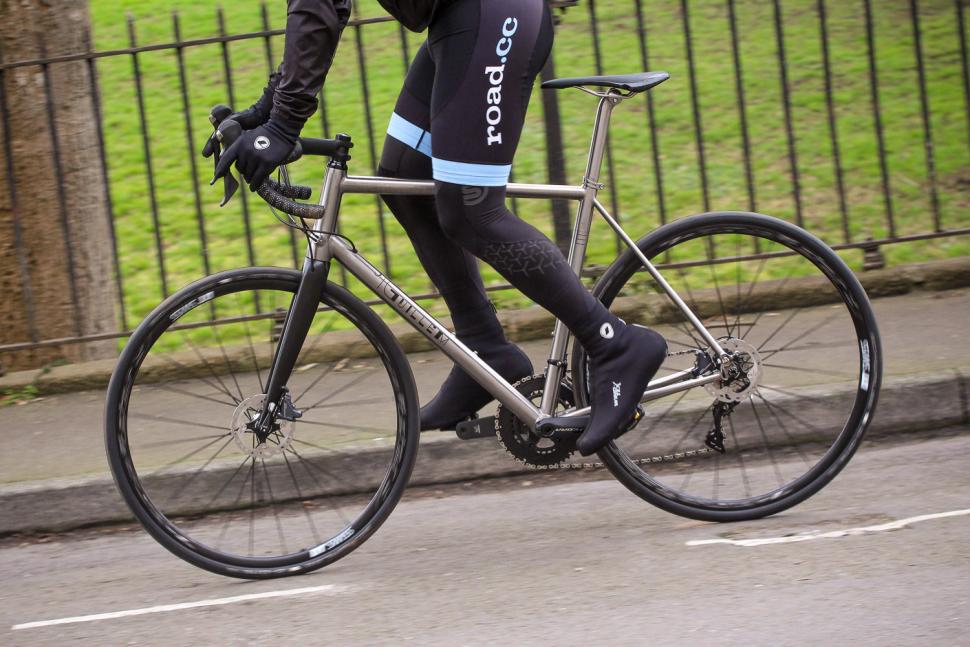
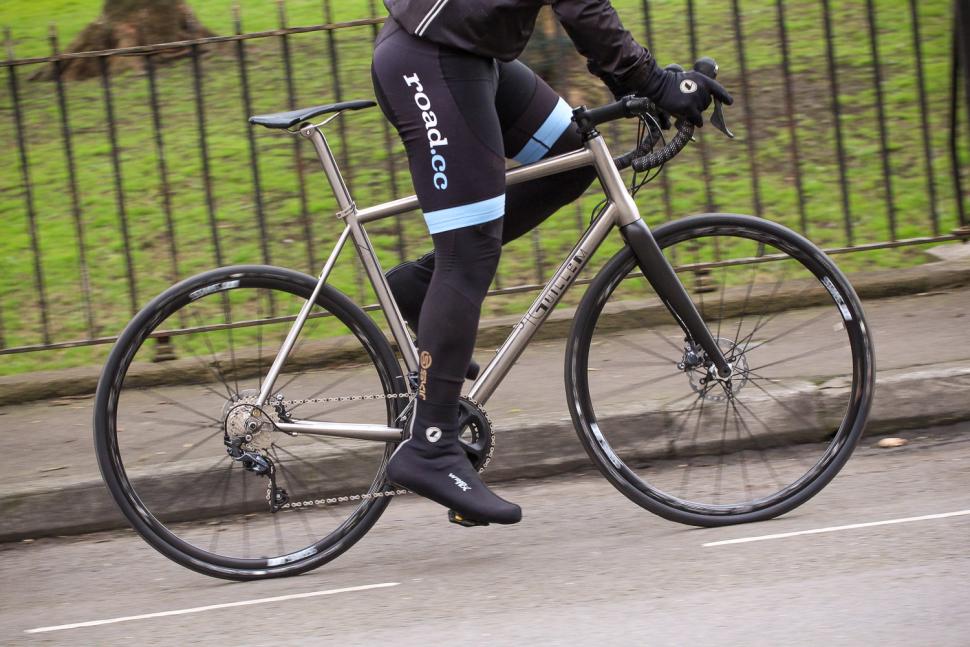

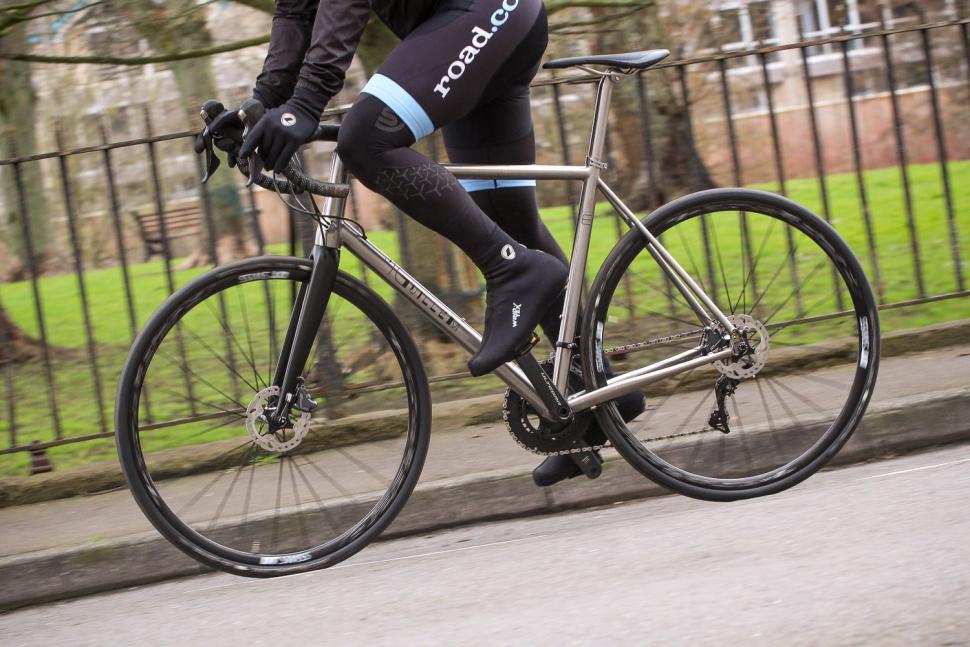
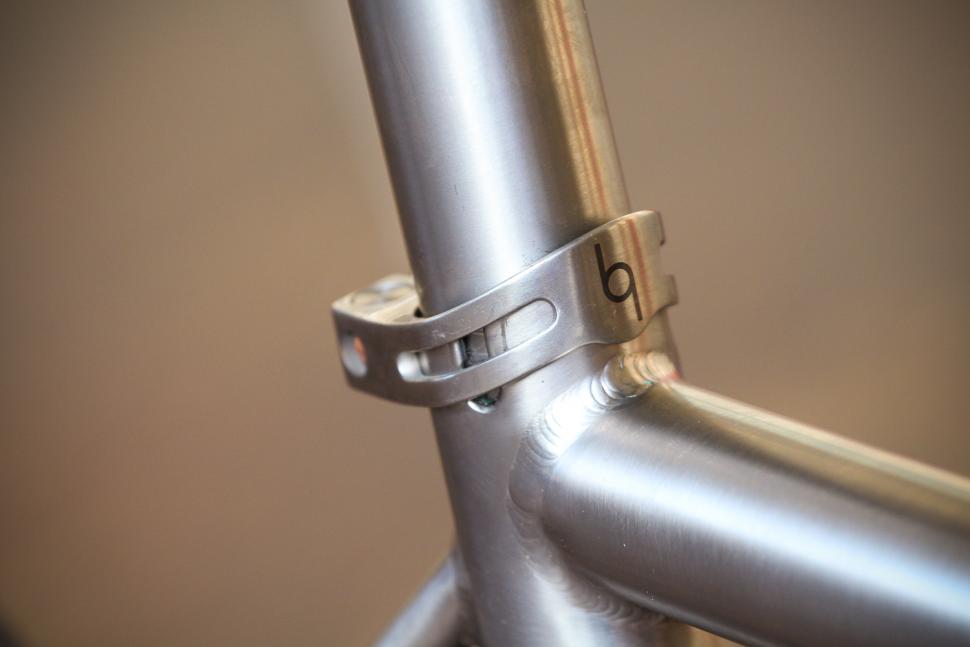
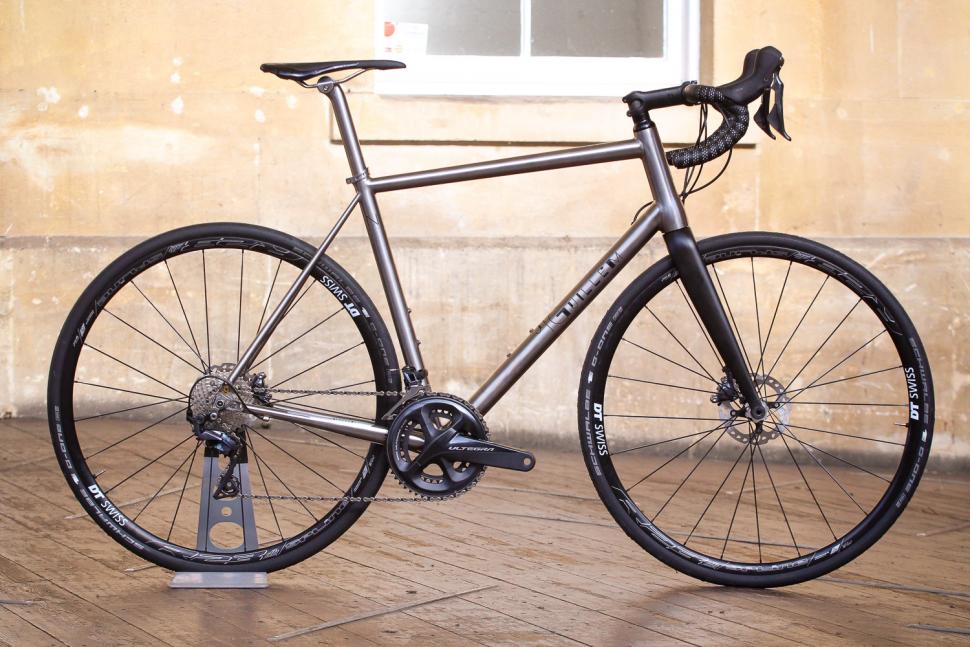
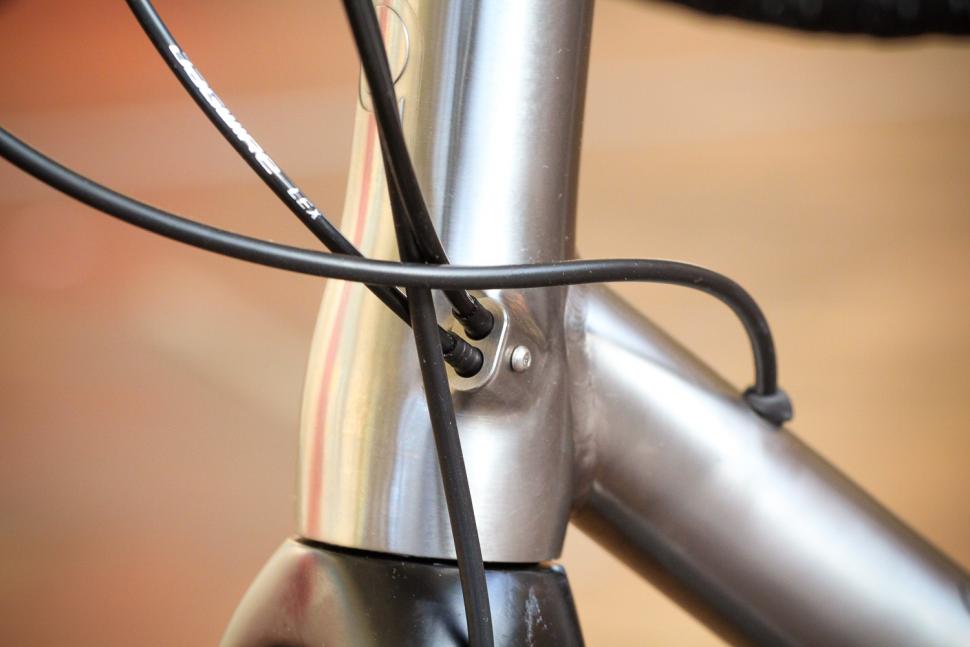
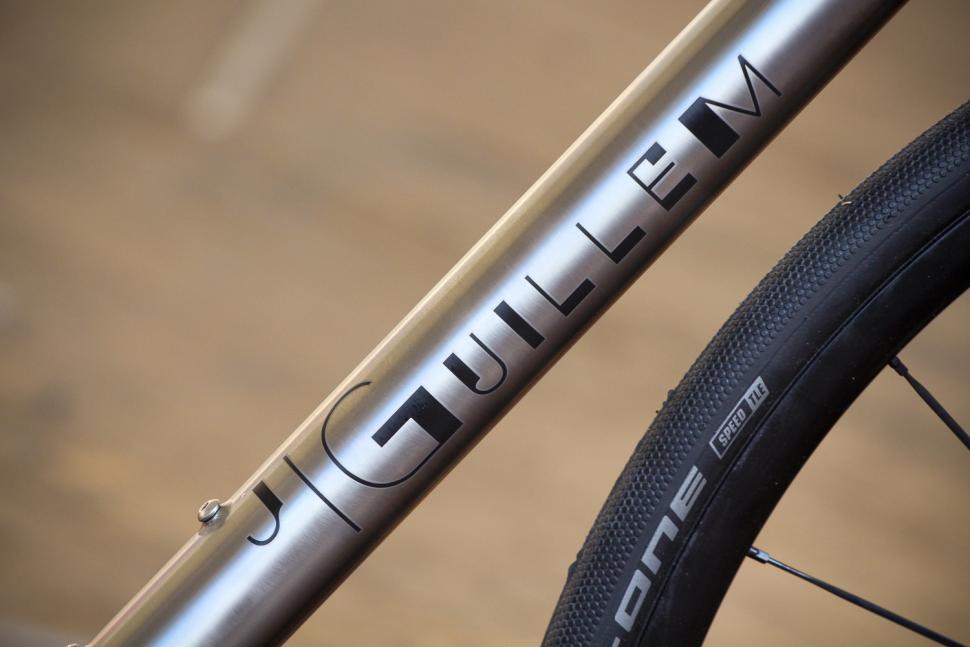
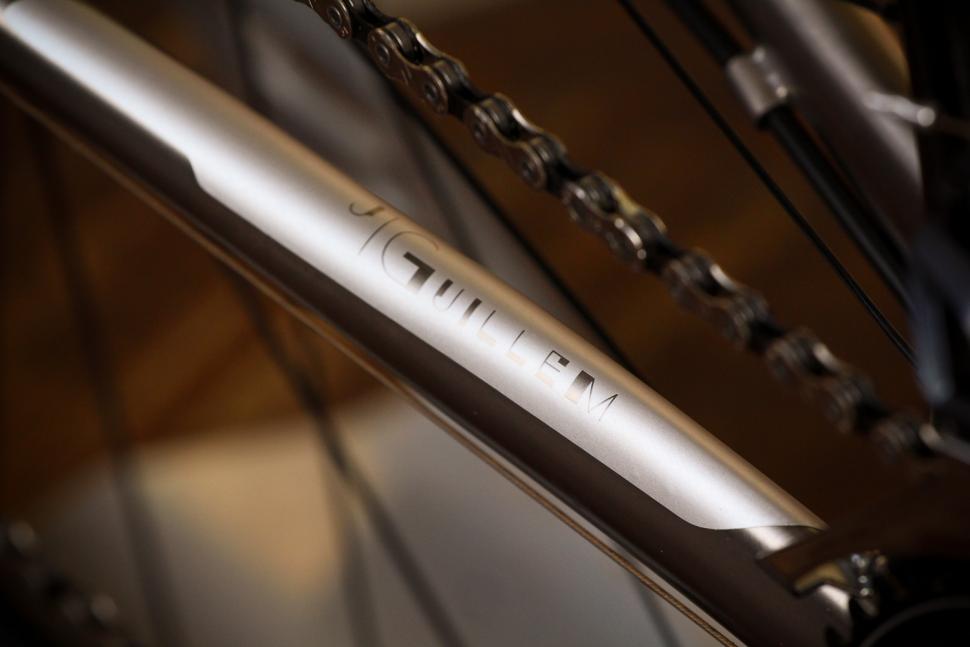



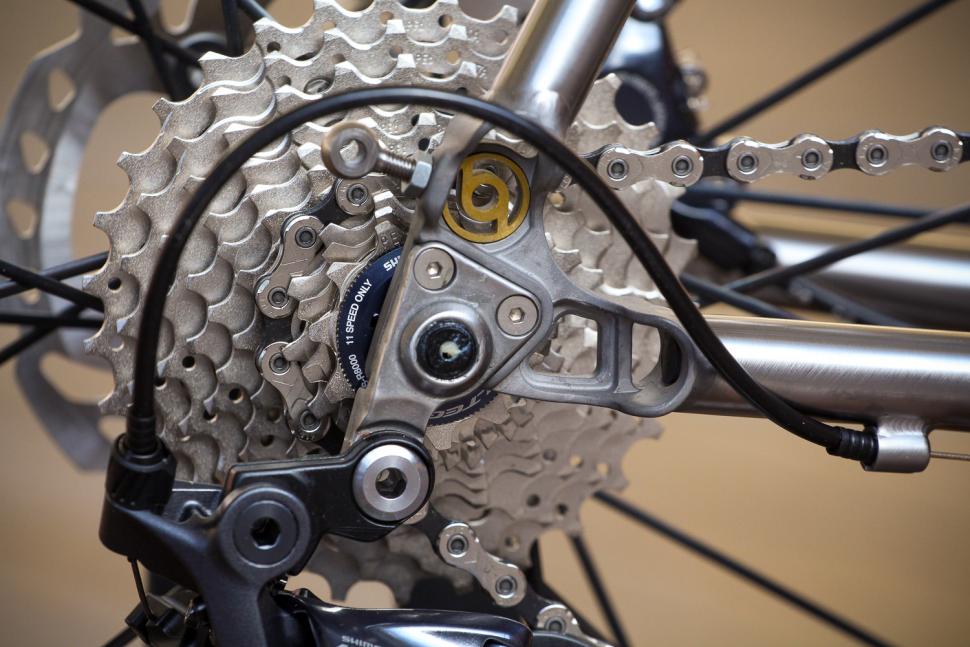
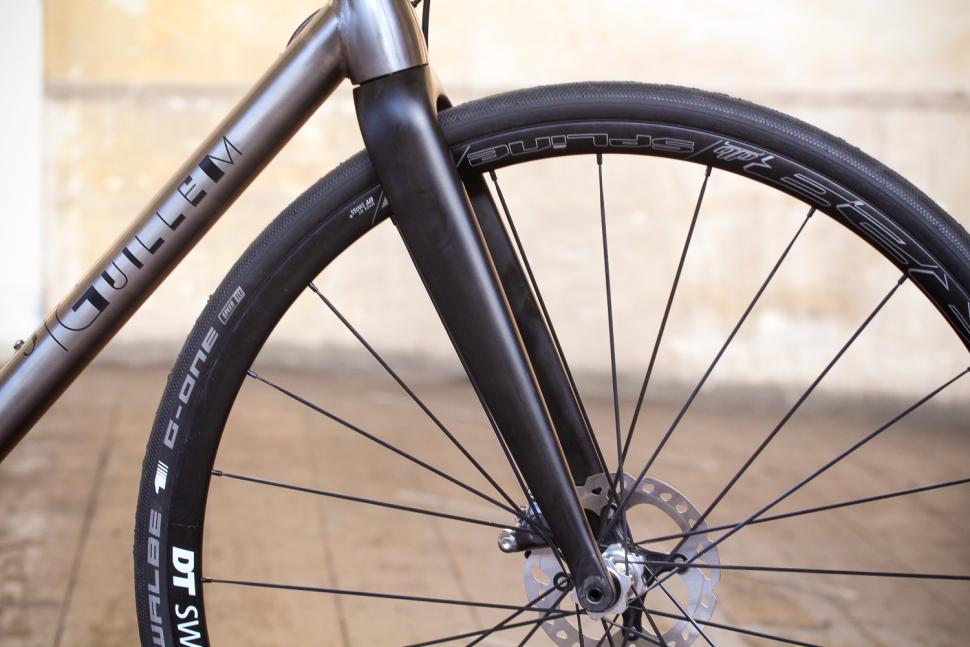
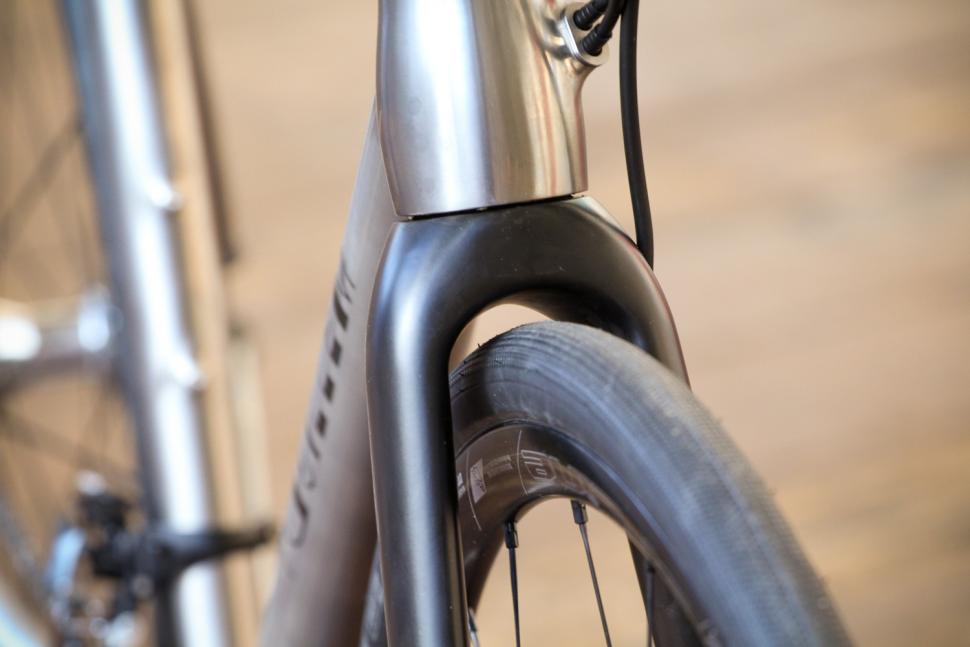
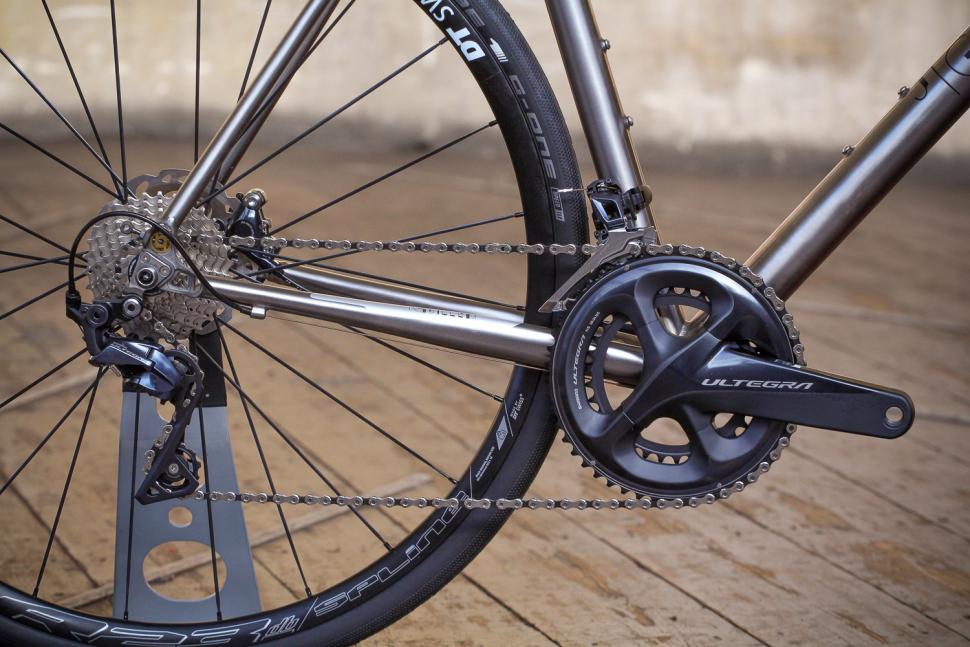


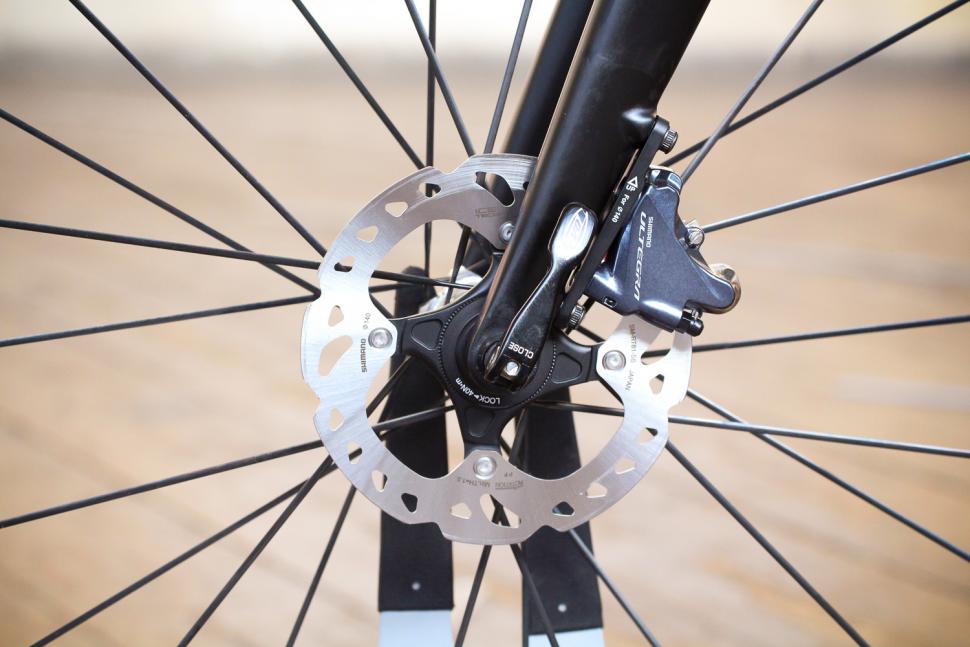
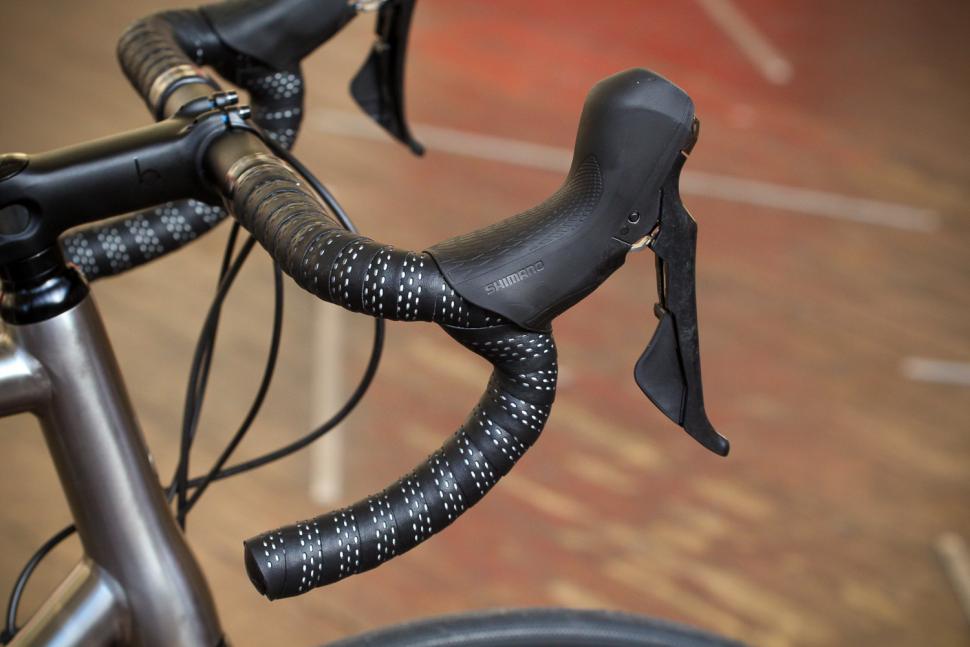
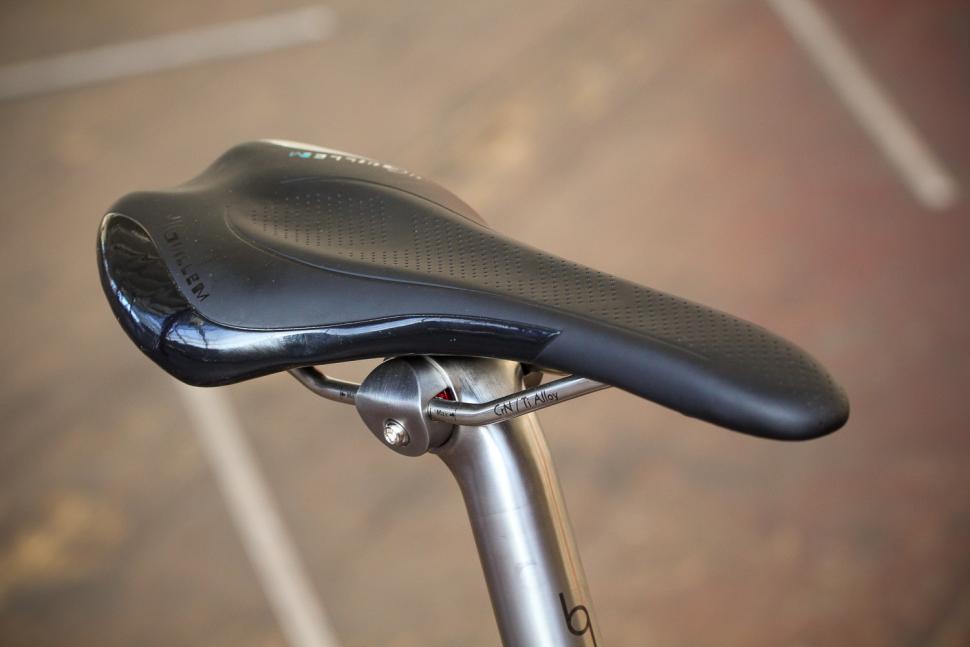
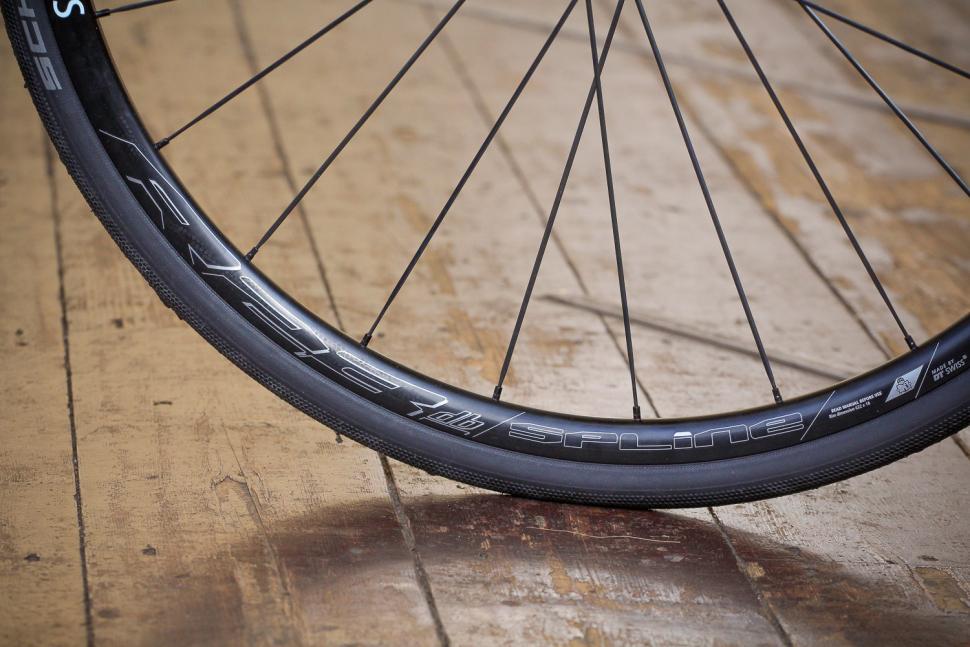


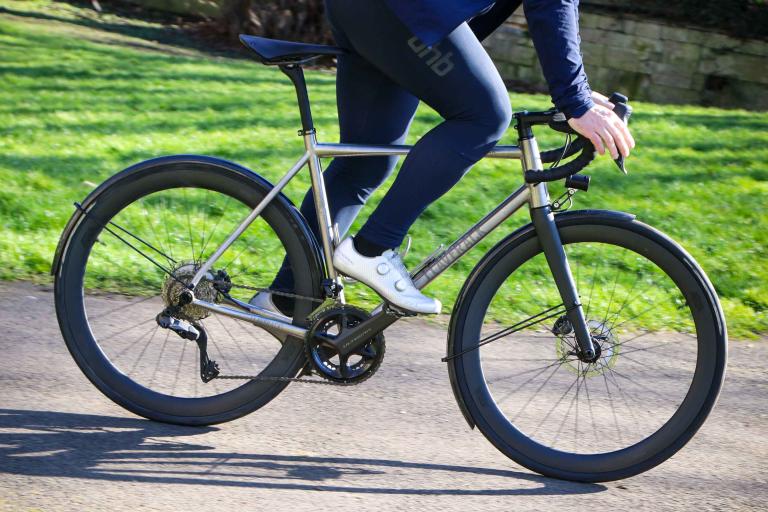
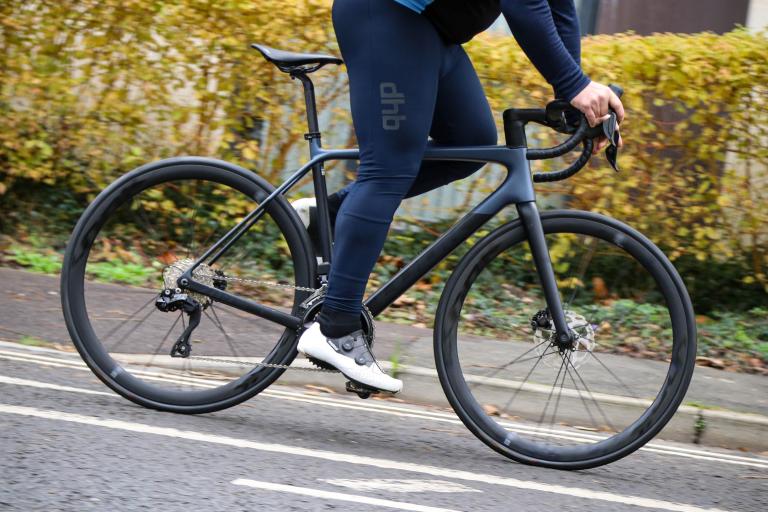
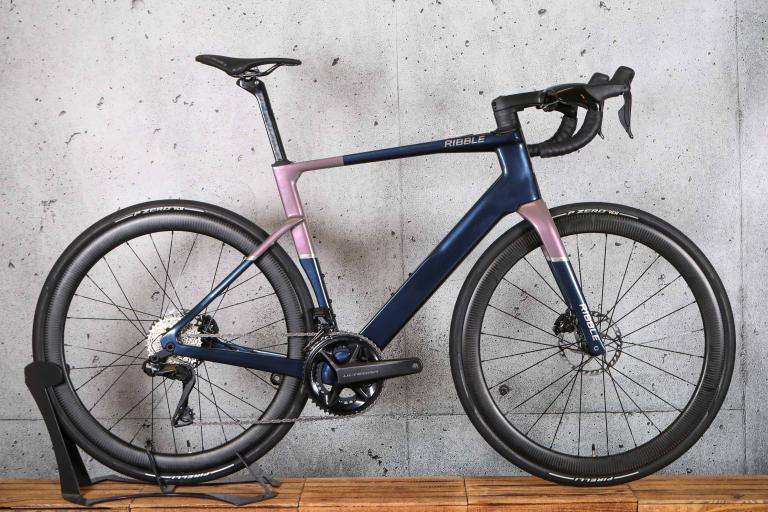
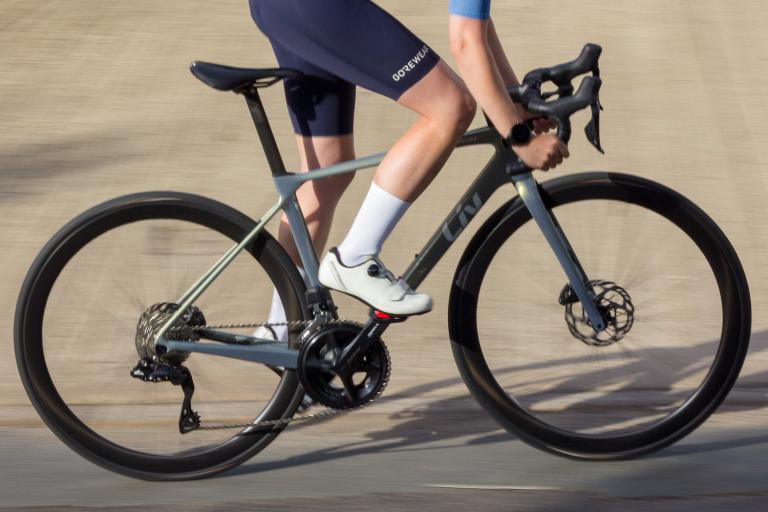
Add new comment
20 comments
If you own a frame with which you are deeply impressed and never want to give up, but it gives you a harsher ride, you can solve this problem by fitting a Redshift shock stem and seat post, or a USE Vybe. End of problem. They are both superbly built and look almost as good as regular items. A slight increase in weight is more than compensated for in comfort resulting in faster and longer rides.
You have me bang to rights there...I don't have the wheels, but in my long experience of cycling you get what you pay for and GBP 150 machine-made wheels have no place on a GBP3000 rig (Tweeks was the link I found - but whether its GBP 150 or 250).
Experimenting with my own frames (Colnago (C), Gios (S), Cannondale (Al/C), Klein (Al) Cervelo (C), and Litespeed(Ti)) and various wheels (DT Swiss, Mavic, HED, Campagnolo, Zipp) and tyres (Vittoria, Michelin and (mostly) Contis) over the years tells me that there is a clear difference between cheap and expensive wheels and tyres. Get it wrong and it changes the ride completely.
I liked the video you posted. Some of the German bike tests I've seen are a little more objective in terms of stiffness and flex on bike frames - because they put them in rigs and compare the absolute data against other bikes. UK mags send someone out on a ride and then give us a subjective opinion and whether they liked them. Back to the video and wheels, it is clear that a rubber will deflect more than a metal or carbon wheel - but wheel 'stiffness' doesn't give you all the data you need to determine how comfortable it will ride. The specialist hand-built wheels I have are more comfortable than the factory-built wheels I have because more attention is given to spoke tension, for example.
I tend to post this video link when frame material conversation comes up, it is an interesting listen with Mike Burrows - who knows a thing or two about the subject
http://www.madegood.com/mike-burrows/#one
(In fact the whole series is worth a look if you have the time or have ever got dragged into a debate about wheels and comfort...)
This year I've bought the Orient in the same setup as the test version, except is has Vredestein tyres. My other bike is a Cannondale Synapse Ultegra, so I can compare both bikes.
The worse the road surface, the smoother the Orient is. I ride it on Flanders roads (including cobbles). Not spectacular but still well noticable. So yes, it's more comfy than the Cannondale, but not that much.
The Orient is fast, but it does not feel like a fast bike. It's only when looking at your speed that you see that you are going fast. So another sign that it's a bit of a smoother ride.
The Cannondale is much more responsive when accelerating. Maybe the weight difference (exactly 1kg less) is here the reason, as well as the wheels (on the Cannondale I have Mavic Ksyrium.
Finishing kit: The saddle on the Guillem is rubbish, it looks really cheap. I immediately replaced it by the Selle Italia that I like so much. The stem is poor quality: the bolts loosen, I have to check this every week. So that will be the next upgrade.
Built: one cable in the downtube (I guess the rear brake cable) is rattling on bad road surfaces. My dealer will have to have a look at it, it's annoying. And I agree about no fender mounts on the fork. This is really bad product design!!! I would appreciate to mount the Curana fenders (just like the Focus Paralane) during winter time, but this is unfortunately not possible.
The frame is a piece of bike jewellery. Beautiful welds, nice details. A head turner. Many people addressed me about the bike.
So why should you bike this bike? I had no rational arguments to buy it. I loved the frame, it's so nicely made... It's much nicer than the standard CF frames that the big manufacturers are offering. Smaller production quantities and the cost of titanium make it some 800£ more expensive then a similar bike with a CF frame.
Despite some room for improvement it is a great bike.
It's interesting you say that, and I wonder if there's a bit of the 'reassuringly expensive' feeling about the buying decision with titanium, and of course you can see the skill in the welds etc. There's a new process to manufacture ti which apparently is lots cheaper. I wonder if that will reduce some of the cachet when it is adopted.
I certainly get compliments on my ti bike, but to say it's nicer than the 'standard' CF Giant I ride is untrue - in fact in many ways the opposite. There's probably as much or more skill in laying up the fibres to make a CF bike stiff, light, smooth riding, but because it's not metal and made in a massive factory people don't give it a second glance.
I was going to add to the comments on UK roads, but honestly - DT Swiss R23s are GBP150 - testing an expensive frame on such wheels is pointless.
Curious - why is it pointless, especially as far as comfort is concerned ? Also not seen DT Swiss R23 Spline disc for £ 150, more like twice that but they're not available so much these days - the R24s are a cheaper option, more in that price range.
The bike may be a package - but cheap wheels are cheap sheels. An irrelevant RRP - aside as things tend to gravitate to a price they can actually be sold at - it would be rather odd if you thought wheeks make no difference. I have a titanium frame, a steel frame, and a carbon frame and as I swap wheels between rigs regularly I can tell you it does.
AFAICS you can't, and never had, been able to buy R23 Splines for £ 150 - in lieu of any link for that you may have I can only guess you either have the wrong wheels or don't like the wheels and are winging it on the price to try and prove a point. Either way i'm interested in exactly how and why you think the wheels would so effect the performance of the bike so much it 'pointless' testing it with them. Seriously, i'm all ears.
2 questions for the reviewer:
An endurance bike that isn't comfortable, and when the speed really picks up "the handling becomes a little vague and loses its sharpness." Sounds more like a do-nothing-well bike.
An endurance bike that isn't comfortable, and when the speed really picks up "the handling becomes a little vague and loses its sharpness." Sounds more like a do-nothing-well bike.
Agree, thought the whole point of titanium was the magic carpet feel you get with it, £4k would buy you something much lighter and more comfortable in CF.
For metal frames, especially, the material is only a very small part of it, the majority of the 'feel' is down to the tube dimensions, shape and frame geometry. Similar with simple composites but you can manipulate the directional properties and material reactions more easily and more noticeably.
This. My £200 T3 (Al) is both comfier and stiffer than the aforementioned Van Nic frame (a grand's worth of Ti), just not quite as light. The "magic carpet" ride of Ti and the "harsh" ride of Al are, in my experience, myths.
I still think Ti looks nice, which can be as valid a reason to buy a bike as any.
Myths often have a basis in reality, my Al bike is like riding a farm gate but the Ti is buttery smooth - very true that the frame build and tyres too have a big impact.
Dissapointing for nearly £4k. Kind of misses the point of a titanium bike and something wrong if it causes pins and needles even on 28mm tubleless tyres. I can set my Kinesis gf ti up to still ride in relative comfort at the speeds quoted in the article and, with less weight to boot.
I found I had the same problem with my Van Nicholas Ventus, although bizarrely for a filling-rattler it was rather lacking stiffness at the bottom bracket. I sold it and bought an R5 for weekends and a T3 for commuting. Both are stiffer and comfier than the Van Nic.